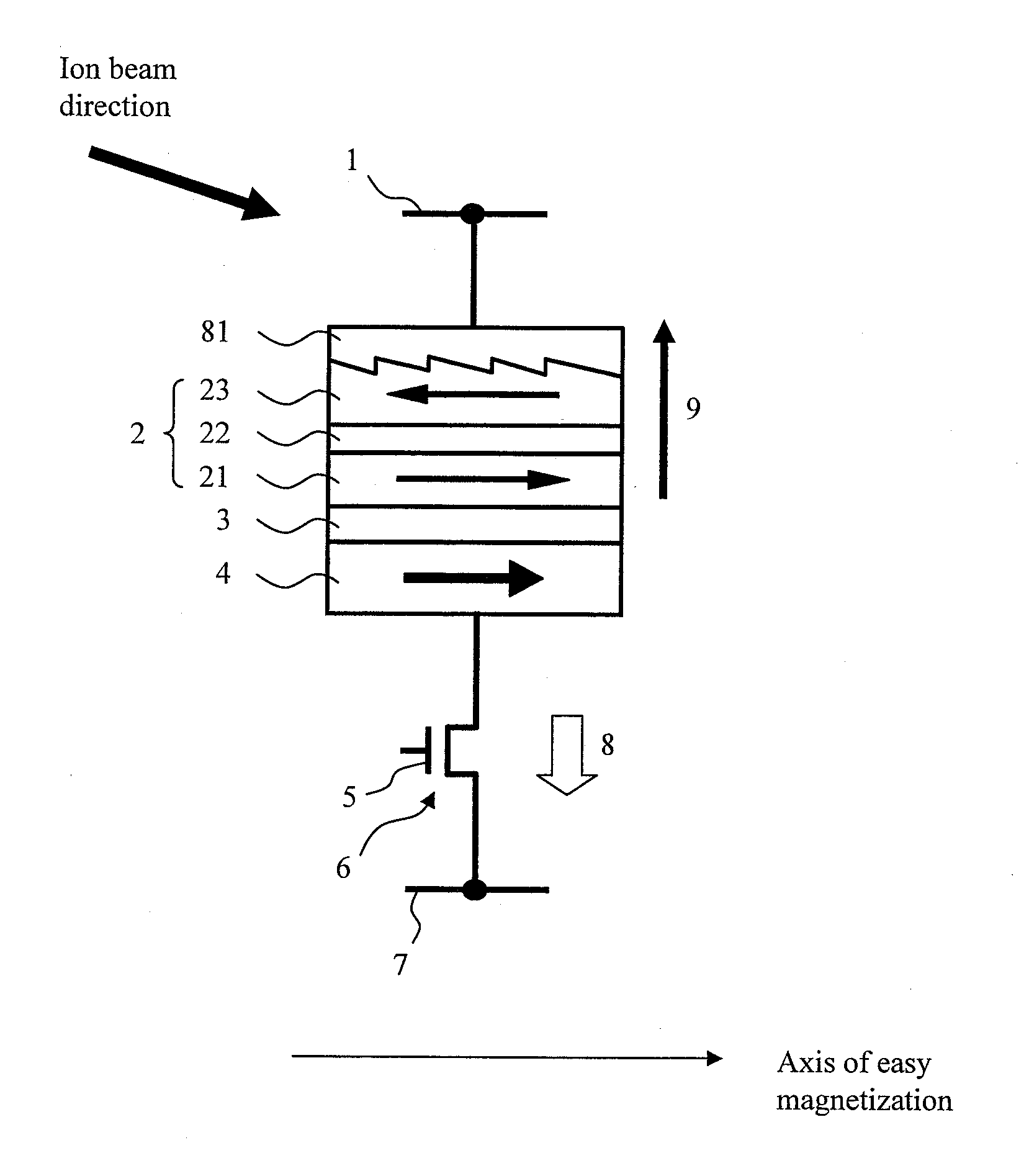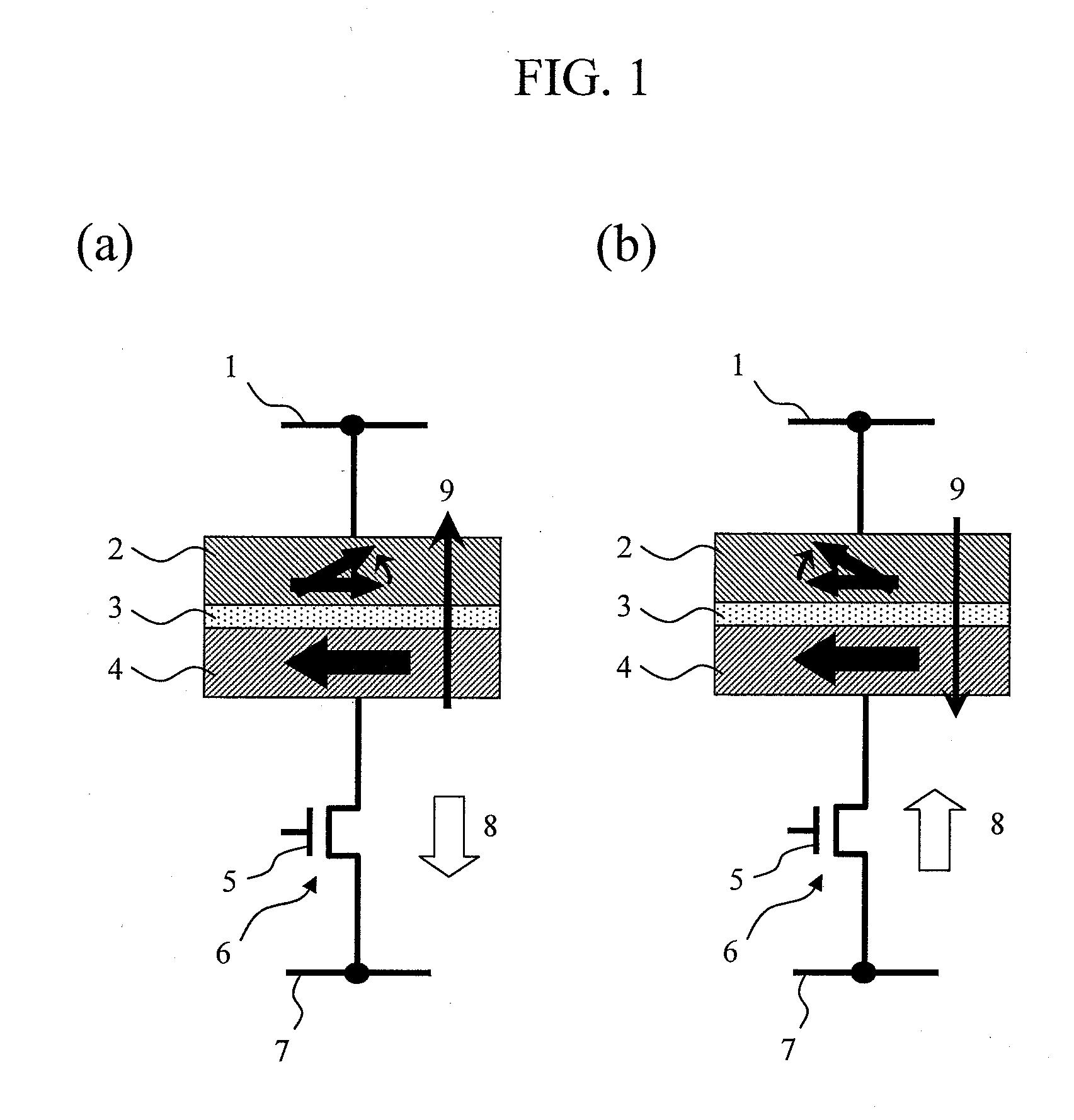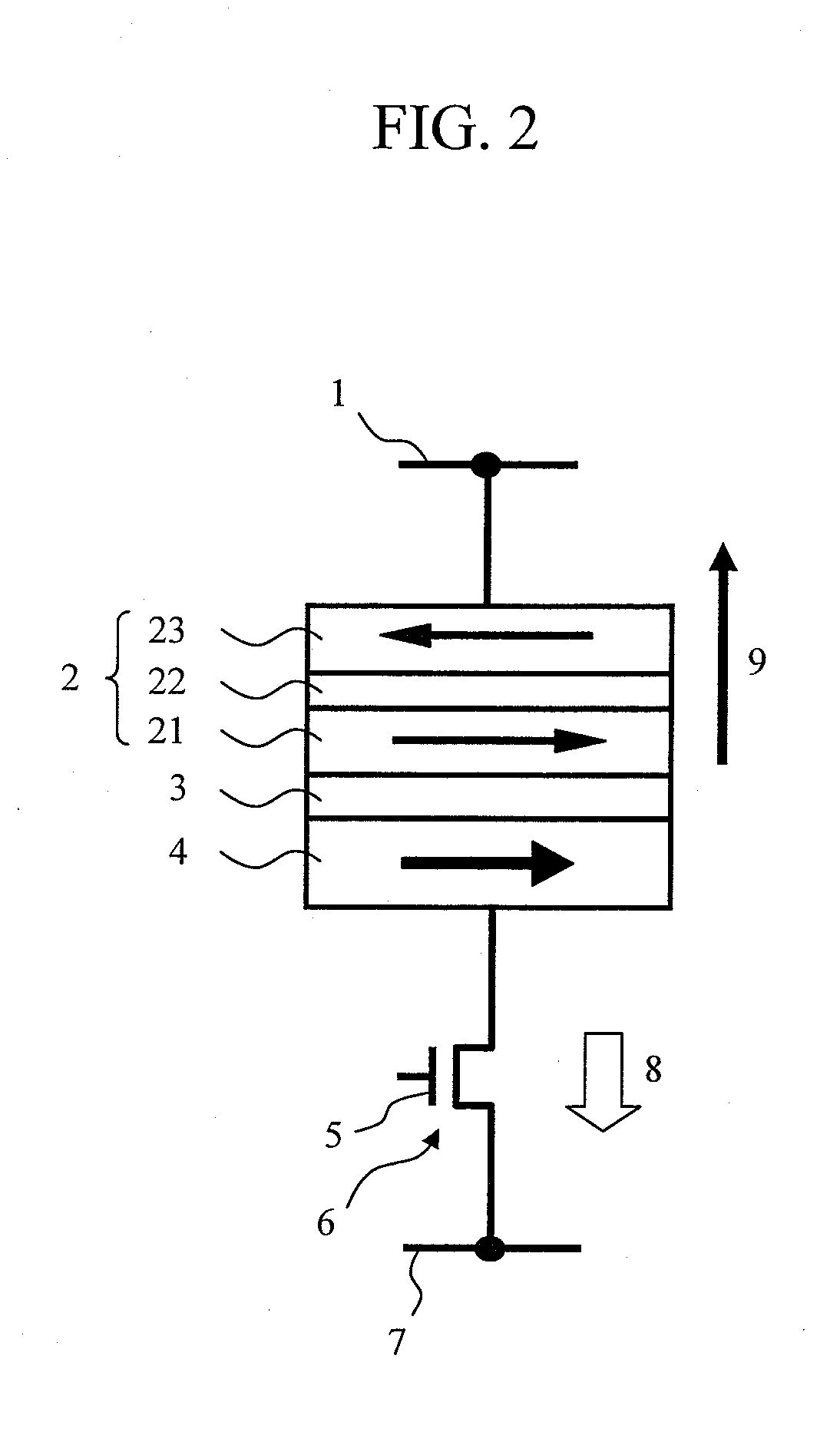Magnetic memory
a magnetic memory and memory technology, applied in the field of magnetic memory, can solve the problems of increasing power consumption and destroying lines, and achieve the effect of reducing curren
- Summary
- Abstract
- Description
- Claims
- Application Information
AI Technical Summary
Benefits of technology
Problems solved by technology
Method used
Image
Examples
first embodiment
[0076]The exchange coupling magnetic field is a magnetic field which attempts to maintain directions of the magnetizations of the two ferromagnetic films 21 and 23, which are constituent members of the laminated ferrimagnetic recording layer 2 in an antiparallel state. It is necessary to set a film thickness of the nonmagnetic film 22 interposed between the ferromagnetic films 21 and 23 to an optimum value in order to increase the exchange coupling magnetic field. This film thickness varies depending on the material or the composition of the ferromagnetic films, the material of the nonmagnetic layer, and a heat treatment temperature after film formation. In the following, a case of using CoxFeyBz as the material of the ferromagnetic layers 21 and 23 and using Ru as the material of the nonmagnetic layer 22 will be described. In particular, a CoFe alloy having the z value equal to about 20% can achieve a high TMR ratio when MgO is used as the material of a nonmagnetic barrier layer 3....
second embodiment
[0092]An embodiment of adding a texture to the upper ferromagnetic layer 23 of the laminated ferrimagnetic recording layer will be described. FIG. 8 shows the example in which the ferromagnetic layer 23 is provided with the texture in the direction of the axis of easy magnetization by use of an appropriate means and a cap layer 81 made of a metallic material is provided thereon. The direction of a periodic structure of texture grooves is substantially perpendicular to the direction of the axis of easy magnetization of the ferromagnetic layer 23.
[0093]With the configuration described above, an antimagnetic field attributable to this microstructure has a function to prevent rotation of the magnetization in the direction perpendicular to the direction of the axis of easy magnetization (i.e., in the direction of the axis of hard magnetization), thereby increasing magnetic anisotropy. As for the material of the cap layer, a material having a high melting point and a low resistance such a...
third embodiment
[0101]Next, a description will be given of a method of providing an additional magnetic layer on the TMR element and setting two magnetization angles of the laminated ferrimagnetic free layer so as to satisfy q1˜q2+180 by utilizing a leakage magnetic field from the additional magnetic layer.
[0102]In FIG. 11, reference numeral 111 denotes a cap layer, reference numeral 112 denotes an additional magnetic layer, reference numeral 113 denotes a conductive intermediate layer, reference numeral 116 denotes a current flowing through the bit line 1, reference numeral 115 denotes a magnetic field generated by the current through the bit line 1, and reference numeral 114 denotes a magnetic field generated by the magnetization of the additional magnetic layer 112. Other configurations are the same as those in FIG. 6. Although a soft magnetic material such as NiFe is desirable as the material of the additional magnetic layer 112, an alloy of any of Co, Ne, and Fe is used in a broader sense. As ...
PUM
 Login to View More
Login to View More Abstract
Description
Claims
Application Information
 Login to View More
Login to View More - R&D
- Intellectual Property
- Life Sciences
- Materials
- Tech Scout
- Unparalleled Data Quality
- Higher Quality Content
- 60% Fewer Hallucinations
Browse by: Latest US Patents, China's latest patents, Technical Efficacy Thesaurus, Application Domain, Technology Topic, Popular Technical Reports.
© 2025 PatSnap. All rights reserved.Legal|Privacy policy|Modern Slavery Act Transparency Statement|Sitemap|About US| Contact US: help@patsnap.com



